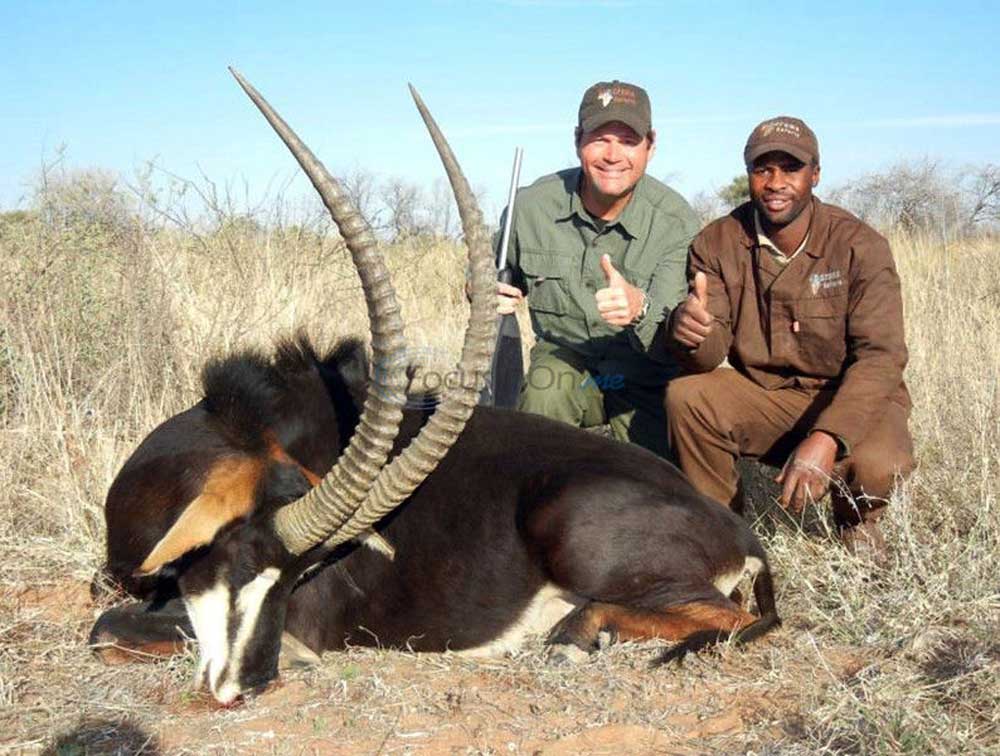Tyler Hunter’s First Safari A Trip To Remember
Published 9:40 pm Saturday, July 20, 2013

- Bill Blomdahl/Courtesy
This wasn’t Bill Blomdahl’s first international hunting rodeo, but it was his first African safari.
So when he started to plan the trip to South Africa through Limcroma Safaris, Blomdahl did his homework studying Safari Club International and other game record books to get a feel for what he wanted to bring home.
Trending
“I wanted true trophies. There was a certain size kudu and certain size sable that I wanted to take. I talked to my PH (Hannes Els), and he knew the type of animals I wanted take,” Blomdahl said.
Meeting Els at the Dallas Safari Club convention, Blomdahl set up the 16-day hunt for late June, which is winter there and the peak of the rut for many of the animals on Blomdahl’s list.
South Africa is often the entry point for first-time hunters to the continent. Unlike most of the other African nations where hunting is on large concessions of open range, South African hunting has a lot in common with Texas hunting because it is conducted on ranches. In this case, however, they are large ranches typically 30,000 acres and larger. In all, Els operates on a total of 250,000 acres.
“It is wild herds. I think the animals have always been there, but they try to manage them like deer. They only let people kill so many, and like deer they take out the females and a certain number of bulls and bucks,” Blomdahl said.
The good thing about South Africa is that it lets new hunters get over the initial excitement of seeing herds of animals they may have only read about. Although an experienced hunter, it was a unique experience for Blomdahl.
“I have not seen most of these animals live. It was amazing,” he said.
Trending
Traveling with his son-in-law, former Tyler resident Dalton Spivey, Blomdahl had a big list of animals he wanted to take. He ended up with 15 total, 14 from different species. Animals taken included a waterbuck, wildebeest, a pair of impalas, eland, sable, zebra, kudu, blesbok, red hartebeest, warthog, gemsbok, nyala, black wildebeest and springbuck.
“Every day we were on mission to find a specific trophy, but you never knew what you would come across. If you came across a zebra you would go after or if you came across a blue wildebeest you would go after that,” Blomdahl said.
The morning’s hunt would start at first light with the temperature in the 40s. Days would often last until dark. In some cases it might be a two-hour drive to get to the hunt site, but most were closer.
The hunts often started as spot and stalks from the truck, but ultimately became foot chases.
“We walked miles and miles every day. I ate three big meals every day and when I came home I had lost weight,” the hunter said.
All of the hunts will be memories of a lifetime just because of the location and the events that lead up to the shot. That will include the always-amazing work of the trackers or the effort needed to get in position for a shot.
One example was the day the tracker found the tracks of a trio of eland. Without seeing the animals, he said the biggest was one in the middle. When they caught up with the herd, the big bull was in the middle, and while it wasn’t easy and required three shots and the help of a feisty Jack Russell terrier, Blomdahl got his trophy.
In some cases Blomdahl shot off shooting sticks, something he tried to master before leaving Texas. In other instances it all happened so fast the PH would tell him to put the rifle on his shoulder for a rest.
“I was looking for a big waterbuck. We had passed up some OK ones, but had not seen a super trophy. We rounded a corner one day and there he was with a bunch of cows. The PH said ‘Put the gun on my shoulder and shoot.’ It was quartering and he said to shoot six inches back,” Blomdahl said.
The shot put the animal down, but before he could fire a finishing shot, the big bull got up and ran. At that point the tracker took over following the tracks he knew belonged to the wounded bull through brush for almost 500 yards.
Blomdahl said the most difficult hunt was for a greater mountain kudu, one of the great curl-horned antelope of Africa.
“We had to scale the side of a mountain to get to it. They like to get on the mountain and hide. We saw it from the bottom. It was on a side of the hill. We had to climb silently and crawl, and we got within 60 yards of him,” the hunter said. The result was a massive 56-inch trophy.
He said the eland hunt was the second-most challenge considering the fact it is an 1,800-pound animal that can jump a six-foot fence.
Some of Blomdahl’s other trophies was a 40-inch-plus sable, a gemsbok with 9-inch bases and horns 37-inches tall and a 23 ½-inch impala.
While bringing the trophies home, Blomdahl enjoyed the spoiles of the hunt at dinner each night with the main course being the game
Along with the excitement of the hunt there also came some learning experiences.
“I learned about shooting. The PH said he didn’t care where the shot goes in, he wanted it to come out in the opposite shoulder. That way it will go through the vitals,” Blomdahl explained.
And like so many others, he learned he wants to go back, but this time for Africa’s biggest game.
Have a comment or opinion on this story? Contact outdoor writer Steve Knight by email at outdoor@tylerpaper.com. Follow Steve Knight on Facebook at TylerPaper Outdoors and on Twitter @tyleroutdoor.




